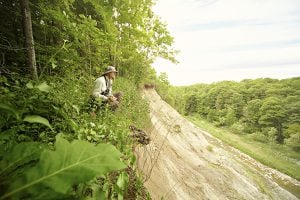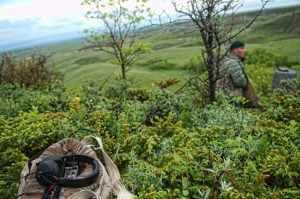Located in the ḥaḥuułi, the traditional territories and homelands of the Tla-o-qui-aht First Nation and Yuułuʔiłʔatḥ, ʔapsčiik t̓ašii provides access to many points of interest while its relatively flat surface makes the trail easy to navigate.
Translating to “going the right direction on the path”, ʔapsčiik t̓ašii was named by Elders who provided guidance throughout the project and contributed to the success of the opening. Working together with Parks Canada, both Tla-o-qui-aht First Nation and YuułuɁiłɁ carefully selected the course of ʔapsčiik t̓ašii and ensured the building of the pathway was completed appropriately with agency provided by Elders from both First Nations. This collaborative approach allowed each partner to share valuable knowledge about the cultural heritage, ecology and topography of the area.







